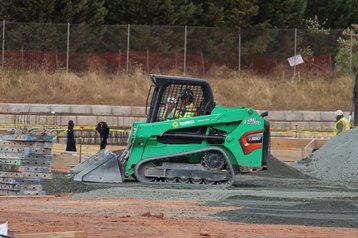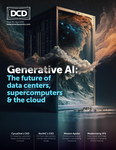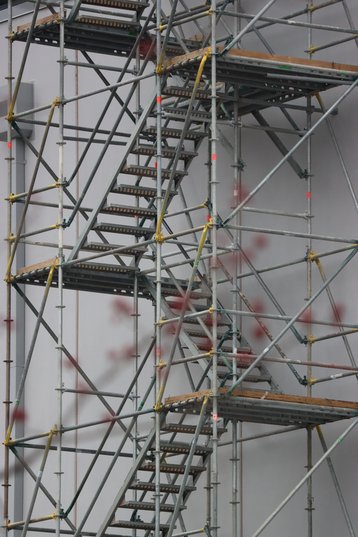As the world recovers from a series of shocks to global supply chains, the data center industry is not unique in wanting to build redundancy into its logistics network while still supporting rapid growth and razor-thin margins.
But the sector, which straddles the worlds of traditional construction and cutting-edge technology, faces a set of distinctive challenges. Now, as things normalize, there is an opportunity to address those challenges and build the supply chains of tomorrow.
"I do think, in many ways, the data center industry is much slower to change than other industries, which is quite interesting," Brett Rogers, CEO and founder of supply chain software company KatalystDI, said.
Rogers would know: He spent nearly 11 years as a data center contractor for AOL, General Dynamics, and other Fortune 500 companies, and nearly five years as a VP of critical facilities for Mark G. Anderson, where he was responsible for facility development of almost $1 billion of critical infrastructure.
After a year-long stint building out Tesla's Gigafactories, Rogers returned to the data center industry for a nearly six-year spell at Google, where he eventually ran the company's US data center buildout.
It was there that he began to see that the industry, for all its apparent love of data, was failing to make use of information to improve its supply chain.
This feature appeared in the latest issue of DCD Magazine. Subscribe for free today
Every building is different
"If you think about each data center construction project, it has its own unique supply chain - everything's individualized and bespoke,” he recalled. “In fact, this was the genesis for the company - back in September 2018, when I was at Google, we had released something like 600-800 megawatts of orders into the marketplace. And right away we started learning about these delays in a very specific part of our delivery plan, it was something as simple as busway.”
Those delays compounded “because of the way that construction works, where coordination and detailing are done at the job site,” he said. “We have never stopped to standardize, so every project did things a little bit differently. Every order was custom.”
We have the tools and data to move from traditional construction to a more industrialized construction vision “where supply chains become repeatable, more productized,” and construction is akin to following Lego instructions. “If you just dumped 7,000 Lego pieces on the floor, and handed somebody an exploded diagram showing how they went together, that would be a nearly impossible task,” he said.
“What Lego does is they package them into these little packages with maybe 20 pieces and a set of instructions for them. You put these all together, and then those little sub-components go together. That's really what I think construction becomes."
The hope is to move from bespoke projects to a decentralized standardized supply chain. "And so that's the problem that we're working on within our software,” he said. In essence, the company provides a web platform where customers input their data center design, and layer in suppliers and commodities in a hierarchical structure where you can zoom in and out of each product’s supply chain. This, in theory, allows companies to spot an overreliance on vendors, surface supply issues, or see alternative options.
While the vision predated Covid, back in those pandemic-free days “nobody really even talked about the concept of the supply chain,” Rogers claimed. “And then Covid hit, and everybody wanted to talk about the supply chain.”
This allowed his company to start conversations, but the virus still impacted how businesses approached change: “It's hard to plan for the long term when you're trying to put out these giant fires within your program, so that was the downside.”
Supply chains have steadied out a bit now, but there are still enough issues to keep people focused, “it's become sort of a more mature discussion of ‘we're moving through the storm, how do we make sure we're better positioned for the future?’"
The supply chain industry has no shortage of companies offering to use big data and a splash of AI to solve challenges, even though software in itself could not have avoided the chaos of Covid or black swan events like a boat being stuck in the Suez Canal.
"It's by no means perfect,” Rogers admitted. “This is a huge journey that's going to take a lot of time to get to, but it's also by no means smoke and mirrors. The software's real.”
Basic and obvious?
In fact, parts of the software seem simple, he countered. “I'm an industrial engineer, by education. If I were to show this to people I went to college with 30 years ago, they would laugh and be like, ‘Oh, this is so basic and obvious,’ and they would be right from a manufacturing perspective.”
When he was working at Tesla, he saw a similar project management ethos for products. “But construction’s different, it’s not like working at Tesla where you do a little experiment and record some outputs for 24 hours and see what happens and then you can make a call,” he said.
“Instead, it’s big cycle times and very, very low throughput. So we're trying to find the middle ground: What's the information that's needed, and how does the supply chain organize for each of these components?”
We’re only at the beginning of our journey to understand our supply chains, Rogers noted, but that journey should be done bi-directionally with suppliers. That means that “if I'm putting an order into the network, how do I make sure that that second or third-tier supplier has access to the right information? Just as importantly, how do I make sure that I understand their lead times, their inventories, and how it's going to impact my projects and planning decisions?”
Data sharing required
Of course that requires companies to put potentially confidential information into the system, and then convince their suppliers to do the same.
When asked whether some suppliers would fail to provide information, Rogers countered that “if we talk to potential customers that have that concern, we generally know those are not great customers for us, because what we're working towards is an aligned philosophy of what the future looks like.”
In his view, companies need that data anyway, even without his platform. “It needs to exist somewhere. If you're building a project, without that data, you're building it with one arm tied behind your back.”
The platform is also not necessarily zero-sum - while the more data it is fed the better, it can operate with less-than-perfect information. Customers have different comfort levels, and have differing levels of granular insight into their supply chains.
“We look at this more as a journey than somebody thinking that they’re just going to sign up and it’ll work perfectly. I will never make that customer happy.”
Over a longer time period, building a repository of data center firms’ supply chains could provide a lot of insight - especially given everyone uses a very similar supply chain. In future, Rogers envisions offering trends or reporting on sectors, but first, the company has to figure out customers’ comfort level with data sharing.
Another challenge is that vendors don’t give the same information to everyone. “What's interesting, is that if you're a Google and Microsoft-type company, and somebody else is a Vantage-like business, and we call the same vendor and ask for lead times on the same piece of equipment, we might get three different answers.”
Data centers may not be so special
Rogers was coy on sharing specific customers, but claimed that “we work with a couple of the hyperscalers, three or four of the colo or wholesale type developers, a couple of general contractors and integrators that build in the data center space, and a couple of the big semiconductor programs outside of the data center space.”
He also wouldn’t confirm how many were using the product across their businesses, and how many were simply trialing it, but said that it was a mixture.
Already he claims the software has proved cost-effective. “I'm talking around 20-30 percent savings on electrical modules and integrated mechanical equipment, just by understanding how you're planning and purchasing certain elements,” he said.
That’s thanks to the years of supply chain management neglect he believes there has been in the industry. “It's a pretty immature space, which means that there's a lot of upside potential," he said.
Now, he argued, it is time for a shake-up. “Data centers for whatever reason have been very insular, and view themselves as special. And the truth is, what is a data center? It's a hardened warehouse,” he said.
“It has a somewhat complicated electrical system to make sure that the electrons keep flowing and it has a heat rejection system to remove heat from the servers. And obviously, there are controls and monitoring layers, etc. But I don't think data centers are nearly as technically complex as they appear to the outside, particularly when you compare them to battery or semiconductor factories.
"This is about understanding them as products to make better supply and demand decisions, inventory matching decisions, and inventory management strategies."



